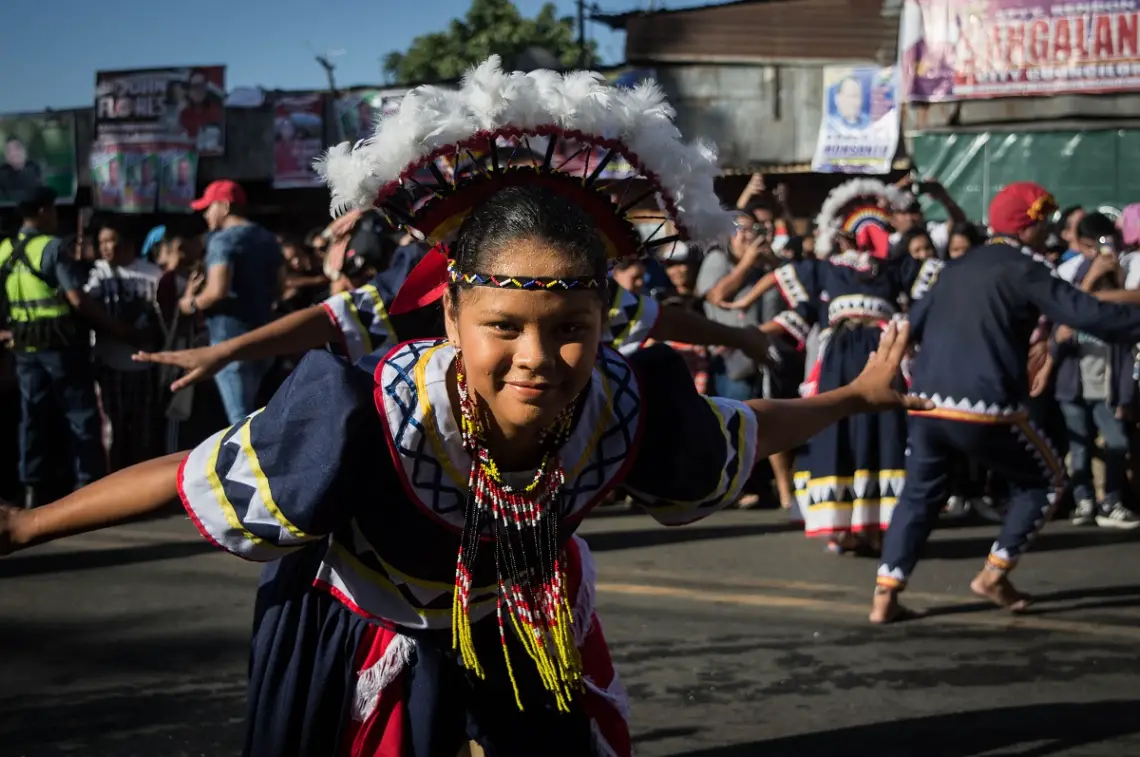
Bridging Cultures: 15+ Mindanao Festivals That You Should Witness
If you’re planning to visit the southern region of Mindanao in the Philippines, then you’re surely up for a treat. Aside from its beautiful beaches, lush landscapes, and diverse culture, Mindanao is also known for its vibrant festivals that showcase the region’s rich heritage and traditions. In fact, we’d say that the Philippine experience isn’t complete without witnessing at least one of these festivals!
Here are the best Mindanao festivals that you should witness at least once in your lifetime.
Contents
- 1. Kadayawan Festival
- 2. T’nalak Festival
- 3. Lanzones Festival
- 4. Zamboanga Hermosa Festival
- 5. Higalaay Festival
- 6. Agal-Agal Festival
- 7. Balangay Festival
- 8. Tuna Festival
- 9. Sunggod Te Kamanga Festival
- 10. Inaul Festival
- 11. Bonok-Bonok Festival
- 12. Kaamulan Festival
- 13. Lubi-Lubi Festival
- 14. Helobung Festival
- 15. Dalit Festival
- 16. Diyandi Festival
- Essential Travel Tips
- What to read next:
1. Kadayawan Festival
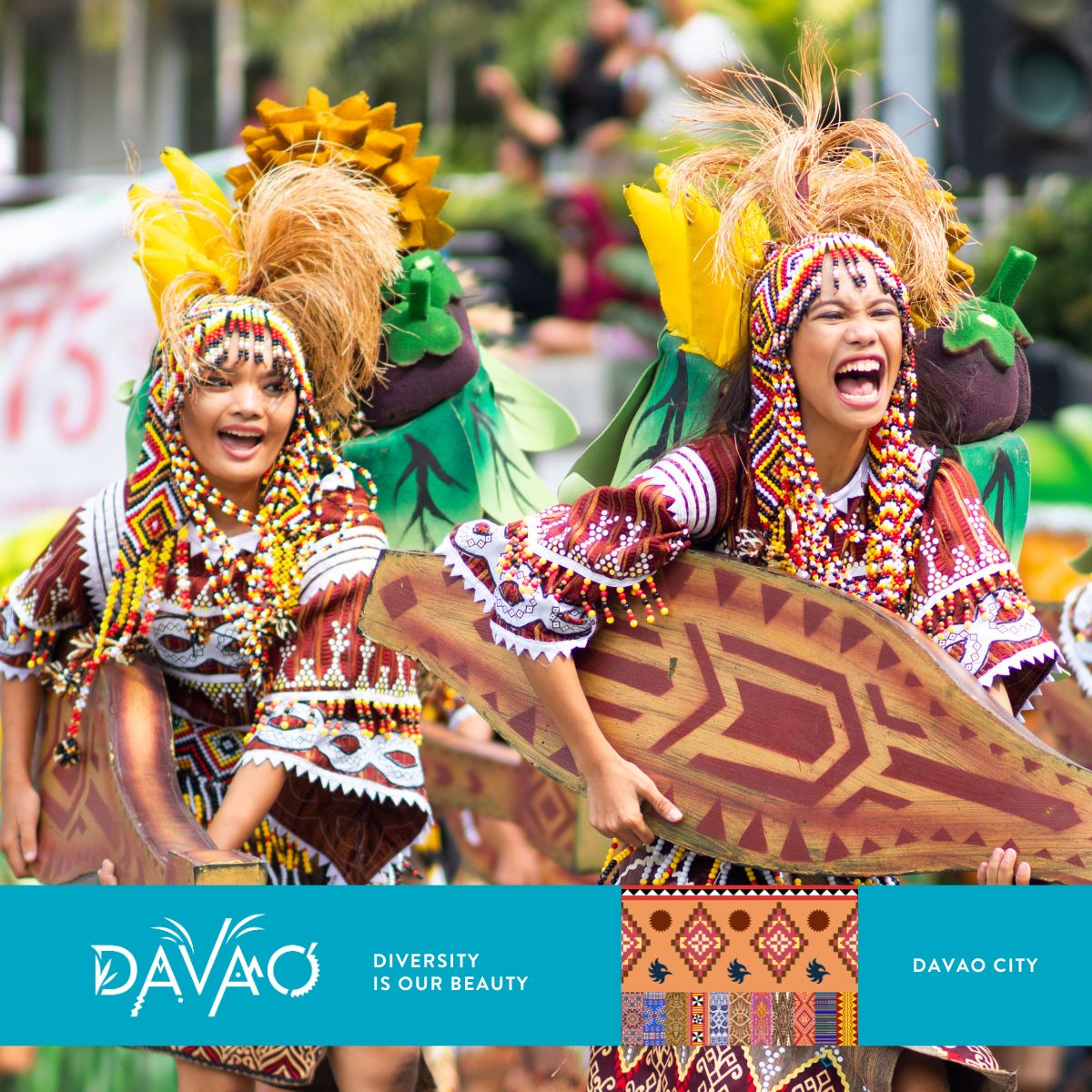
One of the most popular and highly-anticipated festivals in Mindanao is the Kadayawan Festival. In fact, it is also dubbed the “Festival of the Festivals” in the Philippines.
The Kadayawan Festival is a week-long celebration held every third week of August in Davao City. The name “kadayawan” is derived from a local word “madayaw,” which translates to “valuable,” “good,” or “beautiful.” This vibrant festival is a tribute to Davao’s rich cultural heritage, bountiful harvest, and appreciation for the 11 indigenous tribes that call Davao home.
The festival is teeming with colorful parades, lively street dances, and exhibitions featuring local arts and crafts. One of its highlights is the Indak-Indak sa Kadayawan, a street dancing competition where local communities and schools compete with performances showcasing Mindanao’s indigenous stories and folklore. Another anticipated event is the Pamulak Kadayawan, a grand float parade exhibiting a variety of blooms and fruits that Davao is famous for.
The Kadayawan Festival not only brings joy and entertainment but also fosters appreciation and understanding of Davao’s diverse culture and traditions.
- Location: Davao City
- Date: Every third week of October
Where to stay in Davao City:
- Midrange: Seda Abreeza | Waterfront Insular Hotel
- Budget: Red Planet Davao | Hotel Uno
2. T’nalak Festival
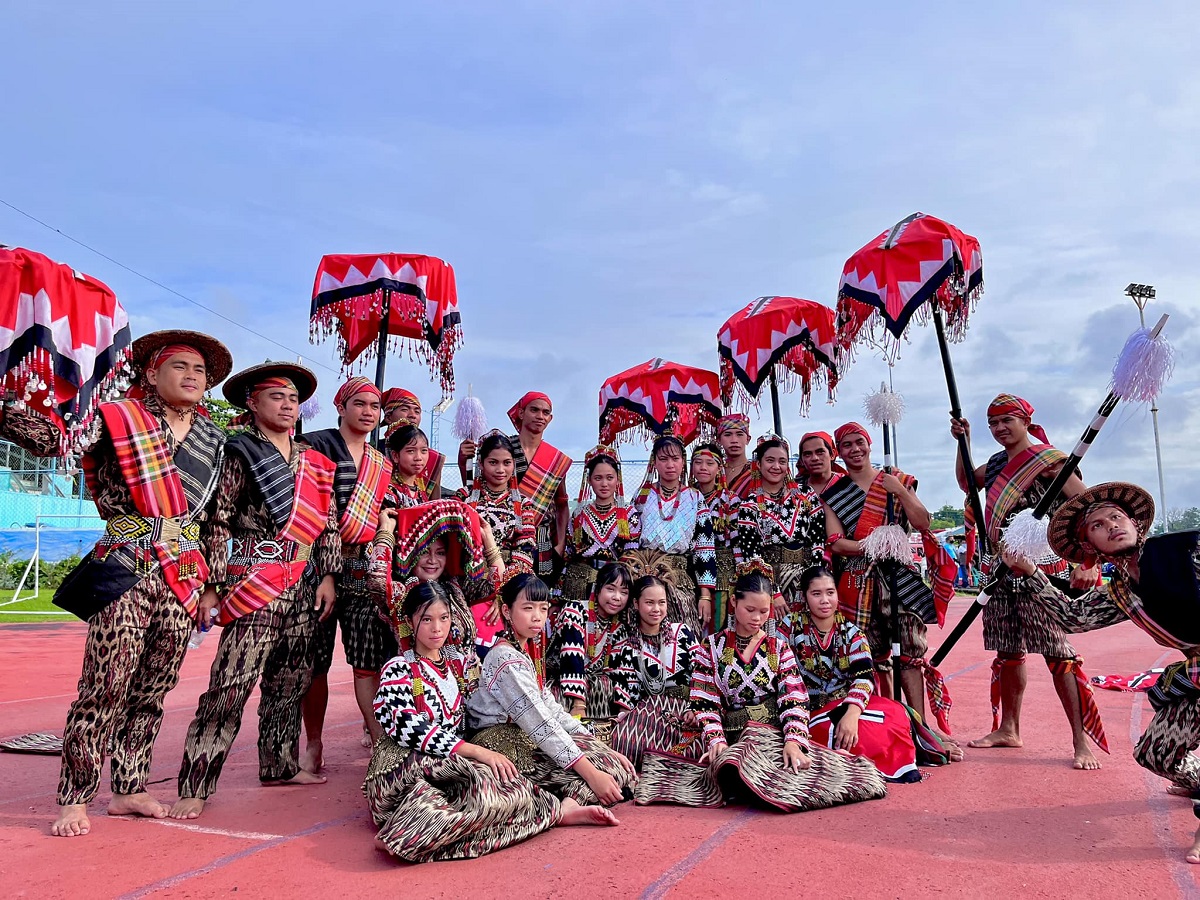
Another one of the most exciting Mindanao festivals that you should see is the T’nalak Festival.
Held in South Cotabato (dubbed the “Land of the Dreamweavers“) every July, this festival celebrates the cultural heritage and arts craftsmanship of the T’boli tribe. It was named after the t’nalak fabric, an intricately woven abaca cloth produced by the T’bolis known for its symbolic patterns and the painstaking process involved in its creation. The t’nalak is a centerpiece of the festival, symbolizing the region’s cultural heritage.
The festival is filled with street parades and various competitions. A standout event is the Tri-People Grand Parade, showcasing the three communities in South Cotabato: the indigenous T’boli and B’laan, Christians, and Muslims. Participants, most draped in t’nalak cloth, perform routines influenced by the T’boli rituals and folklore.
Most of the events at the T’nalak Festival happen in the capital of Koronadal City, but every barangay has their own celebration as well.
- Location: South Cotabato
- Date: Proper festival day is July 18; festivities last a week
3. Lanzones Festival

Another reason to enjoy staying in the Philippines is the abundance of fresh fruits!
Passionate about its homegrown fruit, Camiguin Island in Mindanao celebrates the Lanzones Festival every October. Lanzones is a sweet and tangy fruit native to the region and is one of the most common fruits in the country.
The festival is a week-long celebration full of diverse activities that range from street dancing, where locals adorn themselves in costumes made of lanzones peels, to agri-trade shows that exhibit the island’s best produce. One of the most anticipated segments is the Lanzones Eat-All-You-Can contest, which attracts both locals and tourists to partake in the lanzones feast. A beauty pageant named Mutya sa Buahanan (“Maiden of Fruited Trees”) is also held as part of the celebration.
Take part in the Lanzones Festival to celebrate the bountiful harvest of this luscious fruit, explore the beautiful island, and get to know the friendly locals of Camiguin.
- Location: Camiguin
- Date: Every third week of October
Where to stay in Camiguin:
- Midrange: Bintana sa Paraiso – Binunsaran | Naasag
- Budget: Paras Beach Resort
4. Zamboanga Hermosa Festival
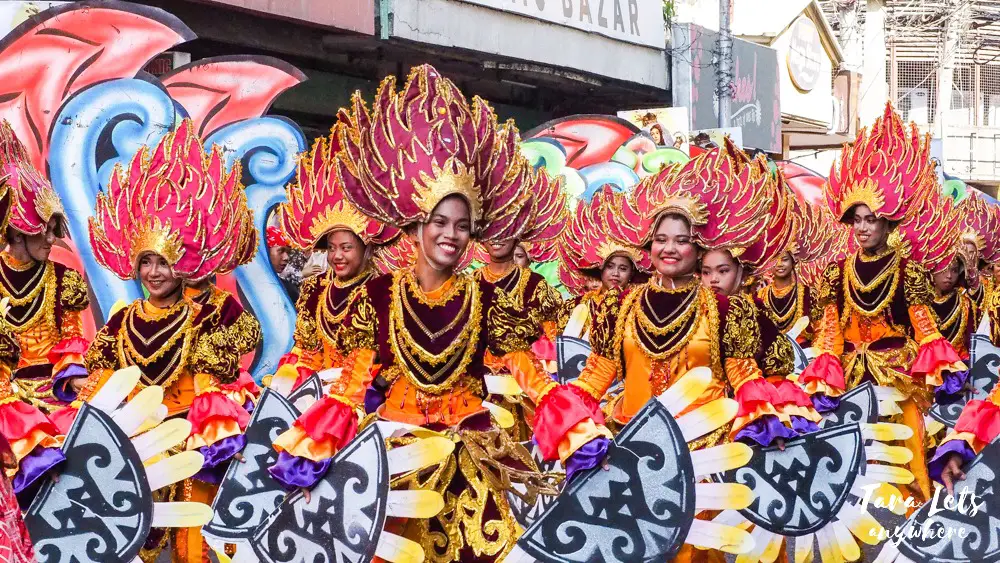
Zamboanga Hermosa Festival, also known as Fiesta Pilar, is one of the grandest celebrations in Zamboanga City held every October. This month-long fiesta is dedicated to the miraculous image of Our Lady of the Pillar (Nuestra Señora del Pilar), the city’s patroness. It encompasses various activities that showcase a vibrant blend of culture, tradition, spiritual devotion, and fun.
Each year, locals and tourists alike look forward to Regatta de Zamboanga, a race of colorful vintas (local sailboats), and Street Dance Competition, where participants dressed in traditional Zamboangueño attire perform choreographed routines. You can also attend competitions for gown artistry, music, and more.
The Zamboanga Hermosa Festival perfectly encapsulates the city’s moniker as “Asia’s Latin City,” combining the warmth of its people, the richness of its history, and the vigor of its traditions in one grand spectacle.
Furthermore, the festival is a great opportunity to explore Zamboanga City, specifically to visit its attractions, restaurants, and nearby day tours.
- Location: Zamboanga City
- Date: Proper Feast Day is October 12; festivities last the whole month
Where to stay in Zamboanga:
- Midrange: Marcian Garden Hotel | Garden Orchid Hotel
- Budget: Winzell Suites
5. Higalaay Festival
Filipinos are said to be one of the friendliest people on earth and this festival in Mindanao may prove just that!
The Higalaay Festival is a vibrant celebration held every August in Cagayan de Oro, also known as the “City of Golden Friendship” and a capital of trade and commerce in the region. “Higalaay” means friendship in Visayan, approximately symbolizing the welcoming spirit and warmth of Kagay-anons. It also pays tribute to St. Augustine, the patron saint of the city.
The month-long gala is filled with religious, cultural, and entertainment activities. The most awaited of these activities is the Higalaay Street Parade, where colorful floats and enthusiastic performers flood the streets, creating a spectacle of music, dance, and cheer. Similarly, the Kagay-an Festival Street Dancing Competition showcases local groups performing traditional Mindanaoan dances in elaborate costumes, providing spectators with a glimpse into Cagayan de Oro’s rich cultural tapestry. There is also a beauty pageant, a rodeo and cowboy festival, and a food fair that showcases the local cuisine in Cagayan de Oro.
If you’re planning to start your journey to witnessing Mindanao festivals, the Higalaay Festival is a good way to start as the city is accessible from different parts of the Philippines through its local and international airport. It also serves as the gateway to other places in Mindanao.
- Location: Cagayan de Oro
- Date: Proper Feast Day is August 28; festivities last the whole month
Where to stay in Cagayan de Oro City:
- Luxury: Seda Centrio Hotel | Limketkai Luxe Hotel
- Midrange: Cagayan de Oro Red Planet Hotel
- Budget: Primeluxe Hotel
6. Agal-Agal Festival
The Agal-Agal Festival in Tawi-Tawi is one of the most underrated festivals in Mindanao, and we’re putting it high up in this list because it’s one of the most authentic festivals in the country.
This festival honors the thriving seaweed industry. “Agal-Agal” is the local term for seaweed, a significant source of livelihood for the island residents. Typically celebrated in September, the festival is a vivid spectacle that highlights the importance of this plant and also the rich culture of the Sama, Bajau, Jama Mapun, and Tausug indigenous tribes.
The highlight of this festival is the street parade and dance, where locals wear colorful native outfits adorned with seaweeds while swaying to the rhythm of the traditional dances of Tawi-Tawi and Sulu, accompanied by native musical instruments such as kulingtangan, gandang, and agong.
Of course, while you’re visiting Tawi-Tawi for the festival, make time for exploring its attraction and activities, including island hopping and trekking to the holy site of Mount Bongao.
- Location: Tawi-Tawi
- Date: Proper Feast Day is September 27; festivities last a week
7. Balangay Festival
Balangay Festival is perhaps one of the lesser-known festivals in Mindanao, but a great festival to witness nonetheless.
The festival is a sterling tribute to the maritime culture of Butuan City, celebrated every May. It was named after the “balangay,” which are small boat-like vessels used by the early settlers of Butuan City for transport, cargo, and looting. The early Filipinos settled into independent villages called “barangay,” which is named after the boat.
The festival’s pinnacle is the Balangay Boat-Building and Fluvial Parade, where beautifully crafted replicas of the ancient balanghay boats sail along the Agusan River. The boats are filled with locals wearing traditional clothing, adding a splash of color to the exciting procession. Apart from these, there is also a street parade, street dancing, and various types of competitions.
The Balangay Festival serves as a bridge between Butuan’s historic past and present, promoting both cultural awareness and unity.
- Location: Butuan City
- Date: Proper Feast Day is May 19; festivities last the whole month
Where to stay in Butuan City:
- Midrange: Watergate Hotel Butuan
- Budget: Go Hotels Butuan
8. Tuna Festival
One of the best experiences in the Philippines is eating fresh seafood and what better way to do that than attending the Tuna Festival in General Santos City?
Hailed as the “Tuna Capital of the Philippines,” General Santos City takes immense pride in its thriving tuna industry, celebrating the annual Tuna Festival every September. This particular festival, unique to the city, is a jubilant celebration of the blessings of the sea.
It features a variety of events aimed at promoting sustainable fishing practices and preserving the marine ecosystem. Among these is the spectacular Tuna Float Parade, where creatively designed floats, themed around the tuna industry, parade through the city streets. Another popular event is the Sashimi Night, a gastronomic feast where visitors can savor fresh tuna delicacies, showcasing the city’s culinary prowess. The Tuna Culinary Contest engages local chefs in a friendly competition, highlighting the versatility of tuna as an ingredient.
This week-long festival not only brings together the people of General Santos City in a grand merriment but also serves as a platform to celebrate and share the city’s rich cultural heritage and economic vibrancy, centered around its beloved tuna.
- Location: General Santos City
- Date: First week of September; festivities last a week
9. Sunggod Te Kamanga Festival
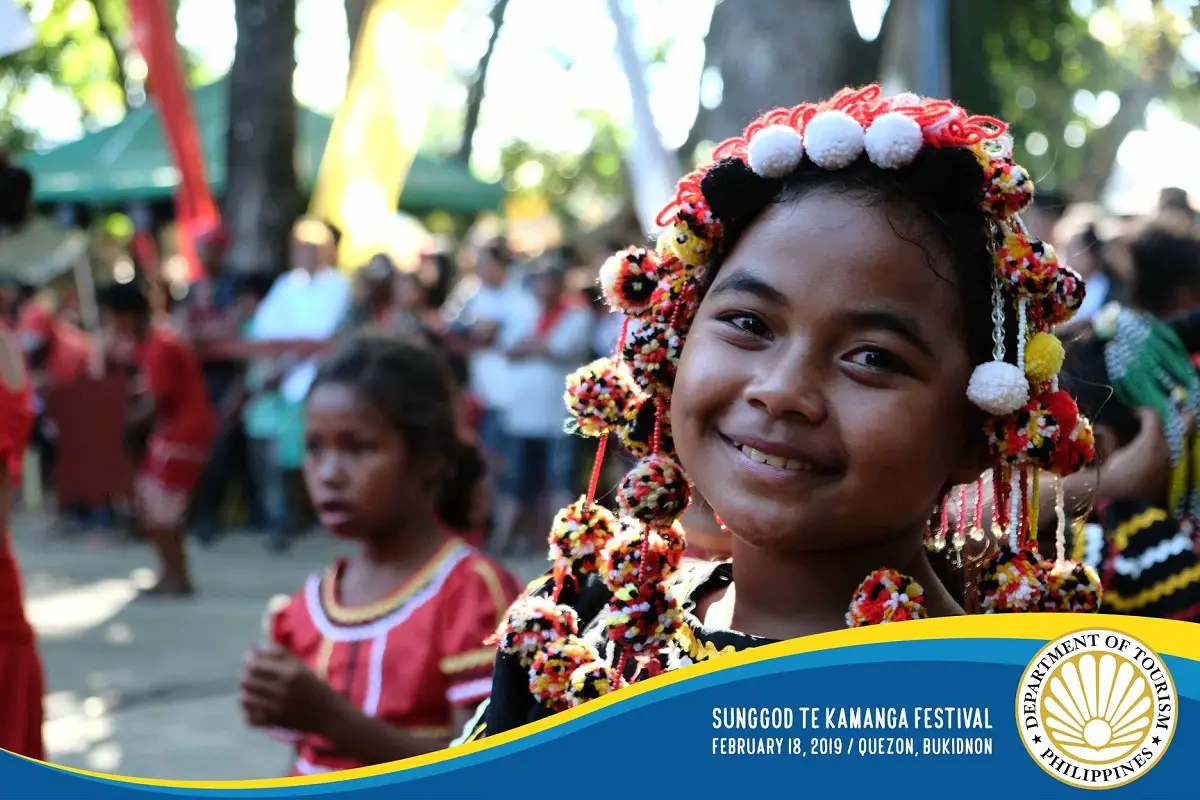
A lot of people visit festivals in the Philippines to see the colorful street parades, but festivals are more than that – they are also a celebration of rich culture and history.
Sunggod Te Kamanga is an all-ethnic festival held in Bukidnon, every mid-February. It celebrates the earliest inhabitants of the town of Quezon in the province — the Manobos. The word “kamanga” means whetstone, a farming tool used by the Manobos, and the festival itself translates to “feeding the whetstone.”
The festival showcases the cultural heritage of Manobos through their intricately designed native attire, folk dances and songs, and sports where they can show off their ethic abilities. The Manobos also perform various rituals important to their tribe.
A lot of visitors describe Sunggod Te Kamanga Festival as a deeply moving experience, providing a profound understanding and connection to the Manobo indigenous tribe. For those who are interested in getting to know more about the indigenous people of the Philippines, this is one of the Mindanao festivals to witness.
- Location: Bukidnon
- Date: Third week of February; festivities last 3 days
10. Inaul Festival
The region of Mindanao has a rich culture of weaving, with different tribes and indigenous groups having their own weaving treatments and designs.
The Inaul Festival in Maguindanao is one of the most anticipated events in Mindanao, celebrating the living weaving tradition of “inaul.”
“Inaul” is the Maguindanaoan term for “woven,” referring to the centuries-old tradition of weaving intricate designs into their textiles. The inaul features five basic designs and each color represents a principle: red (bravery), yellow and orange (royalty), black (dignity), green (peace), and white (purity or mourning).
Held every February, the highlight of the festival is the parade, where inaul-themed floats, street dancers, and music performers grace the streets. Another must-see activity is the Palamata Nu Maguindanao (or “Beauty of Maguindanao”), a beauty pageant where contestants flaunt stunning gowns made from inaul fabric. Other activities to partake in include a cuisine competition, a rodeo show, and various cultural events.
By visiting for the Inaul Festival, you can catch a glimpse of the rich weaving tradition of the Mindanao Region and also learn more about the Muslim culture and arts in this province.
- Location: Maguindanao
- Date: Proper Feast Day is February 14; festivities last 2 weeks
11. Bonok-Bonok Festival
With its 17 idyllic islands, Surigao City is known as the “City of Island Adventures.” But its wondrous nature attractions aside, we’ll give you one more reason to visit this city — the Bonok-Bonok Festival!
Held every September, the Bonok-Bonok Festival (or Bonok-Bonok Maradjaw Karadjaw Festival) honors the city’s patron saint, St. Nicholas of Tolentino, as well as celebrates the culture of the indigenous Mamanwa tribe. “Bonok” means “heavy downpour,” referring to blessings from the heaven, and “bonok-bonok” means outpouring of blessings.
It is famed for its street dancing competition where participants wear traditional tribal attire and perform rhythmic dances to the beat of indigenous music. The dancers’ movements mimic the Mamanwa’s worship rituals for their deities, expressing thanksgiving, and asking for a prosperous year ahead.
- Location: Surigao City, Agusan del Sur
- Date: September 10
Where to stay in Surigao City:
- Budget: The Grande Suites
12. Kaamulan Festival
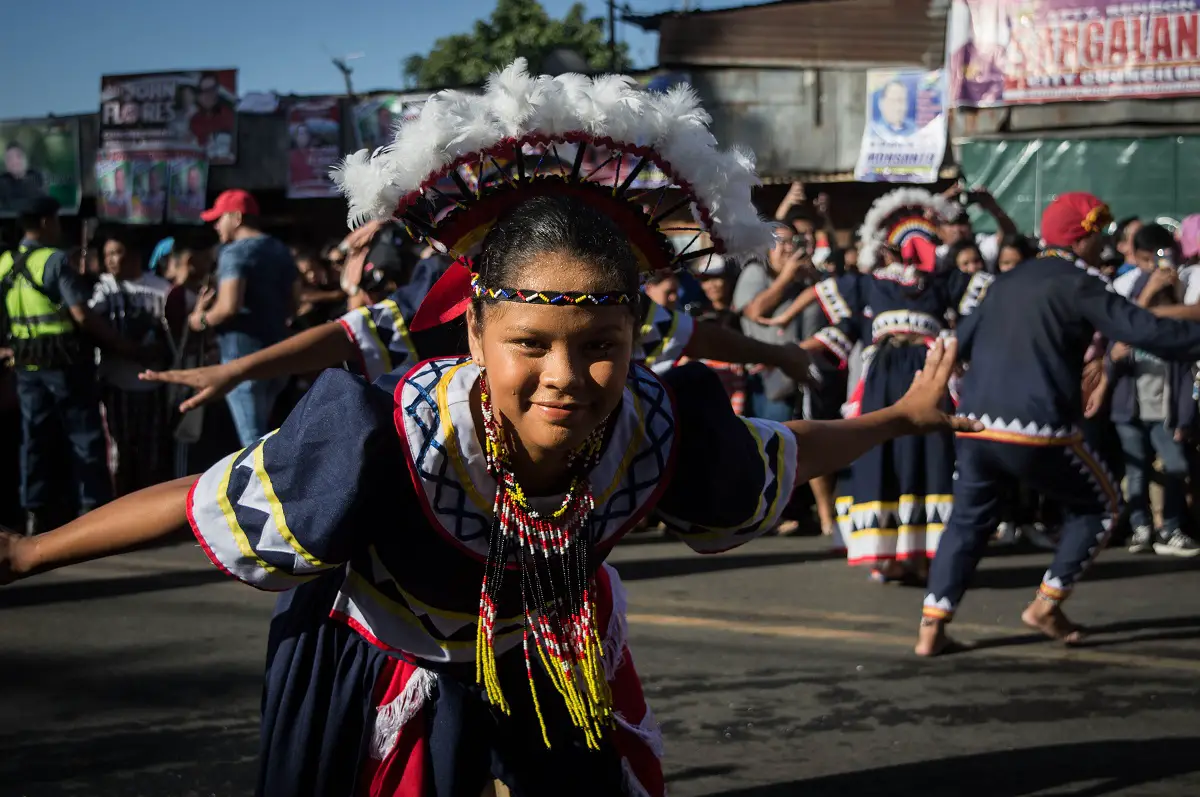
One of the best ways to get to know about the people of Mindanao is thru festivals.
Taking place in the heart of Bukidnon, Kaamulan Festival is an ethic festival that celebrates the culture and tradition of the seven ethnic tribal groups that originally inhabited the province — the Bukidnon, Higaonon, Talaandig, Manobo, Matigsalug, Tigwahanon and Umayamnon.
“Kaamulan” comes from the word “amul,” which means “to gather,” as locals do during various events and celebrations – such as a datuship ritual, weddings, and so on.
Throughout the festival, the province comes alive with a range of activities including traditional dances, chants and music, and ethnic sports. The festival is also marked by rituals, including: “pangampo” (general worship), “panumanod” (a spiriting ceremony), “tagulambong hu datu” (assignment of a new chieftain), “panlisig” (ritual to drive away evil spirits), “pamalas” (ritual of sin atonement), and more.
Aside from these, you can also learn about the products in the province through its food festival, agricultural trade fairs, among others.
The Kaamulan Festival is a profound cultural experience, offering a glimpse into the heart of Mindanao’s indigenous roots and the deep respect the people of Bukidnon have for their ancestry.
- Location: Bukidnon
- Date: Festival date varies every year but is usually from the last week of February to second week of April
13. Lubi-Lubi Festival
Looking for a fun, light-hearted festival to see in Mindanao? Taking place in the quaint town of Glan, Sarangani, the Lubi-Lubi Festival is a celebration of one of the province’s key products — the coconut.
“Lubi” is a local term for coconut and the town of Glan is known as the “Coconut Queen of the South” due to the abundance of coconut tree plantations. The coconut is a part of the locals’ life and culture. Also called the “tree of life” due to its numerous uses, including the whole tree itself, the coconut is used as food, beverage, and material for various handicrafts and agricultural products.
Celebrated in October, the festival is marked by an array of events, including street dancing where locals where colorful attires adorned with coconut materials, coconut-themed culinary competitions, and traditional games.
- Location: Glan, Sarangani
- Date: Proper Feast Day is October 8
14. Helobung Festival
Every second week of November, the sleepy town in Lake Sebu comes alive with an exuberant celebration of the city’s founding anniversary and the rich cultural heritage of the T’boli’s, one of the indigenous tribes in Mindanao.
“Helobung” in the local dialect means “neverending joy.” During the festival, the people wear traditional handwoven t’nalak attire, perform traditional dances such as Madal Tahu, and use musical instruments such as hegelug, kumbing, and k’lintang. There is also rodeo show, a bangka race, food fair where you can enjoy traditional cuisine such as chargrilled frogs, among others. A trade fair showcasing T’boli arts, crafts, and specialties is also part of the celebration.
The Helobung Festival is one of the most underrated festivals in Mindanao — and a great chance to explore the lovely, quiet community of Lake Sebu.
- Location: Lake Sebu, South Cotabato
- Date: Second week of November; festivities last a week
15. Dalit Festival
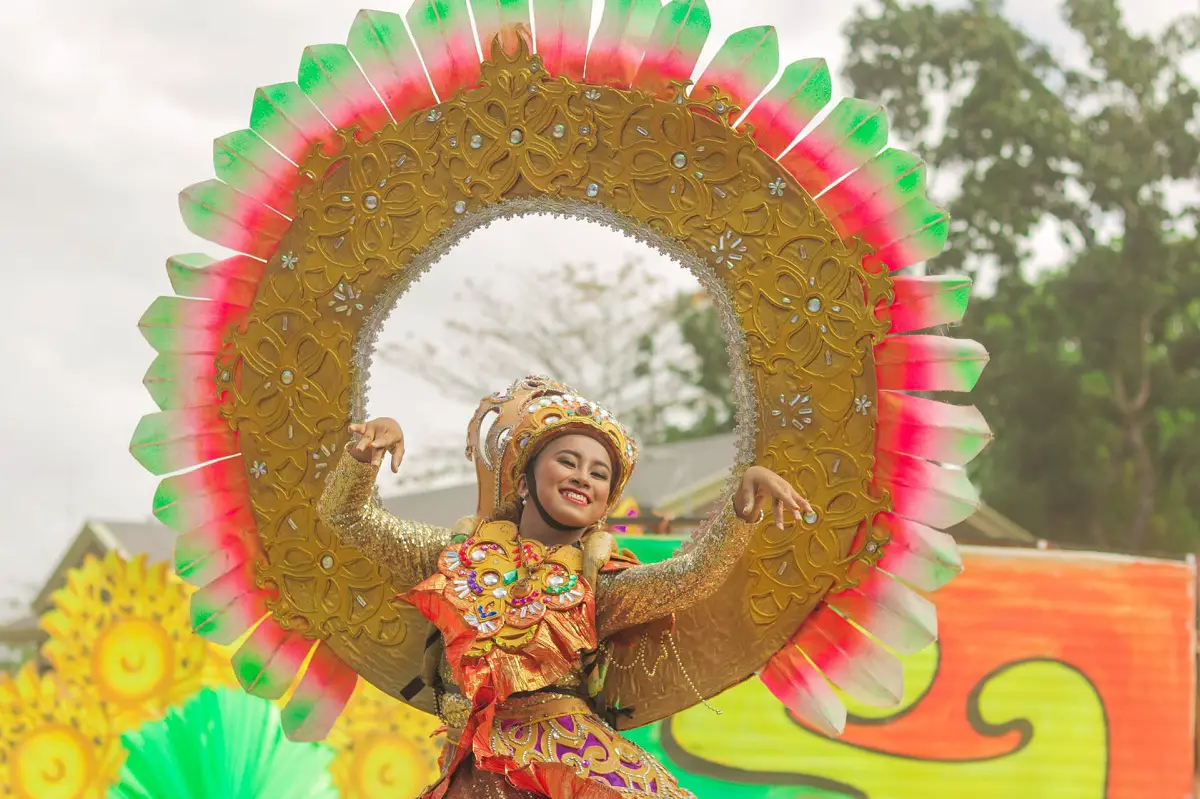
Did you know that some of the best performers and musicians in the Philippines can be found in Tangub City? Just another reason to visit here for the Dalit Festival, held every September 29 to commemorate the city’s patron saint, Saint Michael the Archangel.
“Dalit,” in the local dialect, translates to “offer,” and the festival is indeed an offering of gratitude for the blessings and protection received throughout the year.
The highlights of the festival are the religious procession and the Street Dancing Competition that follows, where contingents, clad in colorful traditional Filipino attire, fill the streets with energy and joy, performing dance steps of prayer, praise, and grace.
Dalit Festival, with its lively performances and vibrant displays, not only brings joy to the locals but also offers a vivid glimpse into the heart and soul of Mindanao’s rich cultural tapestry.
- Location: Tangub City, Misamis Occidental
- Date: September 29
16. Diyandi Festival
Iligan City is one of the lesser talked-about places in Mindanao, and if you’re planning a visit here (especially to explore its numerous waterfalls), then consider going during the Diyandi Festival.
Similar to the festival above, Diyandi Festival celebrates the city’s patron saint, Saint Michael the Archangel, as well as the Christian, Mulism, and Higaonon cultures in the city. “Diyandi” is the Higaonon word for “celebration” or “merrymaking,” and true to its name, this month-long spectacle hosts a number of activities for both locals and tourists.
One of the festival’s highlights is the colorful Kasadya Street Dancing. You can also witness a number of processions, the ritual of “pamukaw” (where the city’s band perform rhythmic beating of drums to awaken the residents for the dawn novenas), and The San Miguel Comedia.
The Diyandi Festival, with its energetic performances, colorful displays, and the residents’ warm hospitality, embodies the zest for life and the strong cultural heritage of Mindanao.
- Location: Iligan City, Lanao del Norte
- Date: Proper Feast Day is September 29; festivities last a month
Essential Travel Tips
Plan your trip. When it comes to going to festivals in Mindanao, Facebook is a useful resource. Visit the official pages of the festival or respective tourism office and look for the schedule of activities, so you can plan out your trip around the activities and events that you want to see.
Book in advance. Expect huge crowds during festivals! Book your flights and accommodations months in advance. If you’re planning to visit specific restaurants, inquire if they also make reservations online.
What to bring: It’s best to bring a lightweight bag, a bottled water for hydration, a hat for sun protection, and of course a good-quality phone or camera for pictures. Wear comfortable clothing and footwear for walking.
Set a meeting area. If you’re coming with friends to a street parade, set up a meeting place for later since mobile data may not be available and there is a possibility of getting lost in the crowd.
Set your expectations. The experience of watching the festivals may be different from what you see online. Media and content creators get a special pass so they can take pictures and videos of the parades better, whereas regular watchers are on the street sides. Either way, it’s fun watching the street parades with the locals’ unique attires and dances! Going to festivals is one of the best activities in the Philippines in my opinion.
Has this guide to the best Mindanao festivals been helpful to you? If you want to add an event, let us know in the comments section below!
What to read next:
Planning a trip to Mindanao? Check out these guides:
- Best Mindanao Tourist Spots + Things to Do
- Best Beaches in Mindanao
- 15 Mindanao Food You Need to Try
Love festivals? Check out these festivals in in the Philippines!
Here are the festivals we’ve attended:
- Lambayok Festival (San Juan, Batangas)
- Tabak Festival (Tabaco, Albay)
- Zamboanga Hermosa Festival (Zamboanga City)
- Gapo at Palusong Festival (General Nakar)
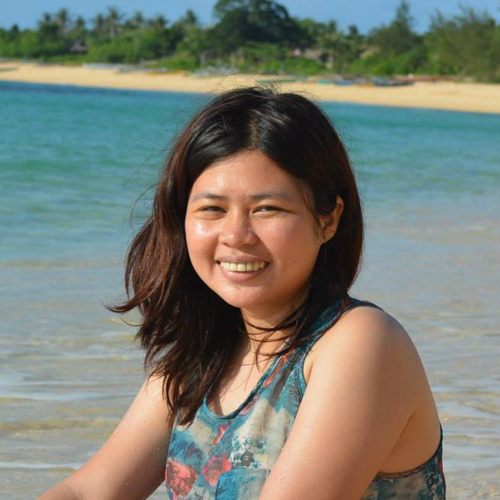
Katherine Cortes is a long-time backpacker and a freelance writer/editor. She likes beaches, snorkeling trips, and relaxing staycations (preferably with bath tubs!).



